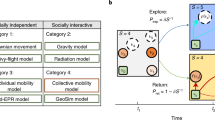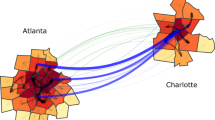Abstract.
Many things in the natural world consist of an ever-larger number of ever-smaller pieces. This is called a fractal, which implies both the power law and rank size rule. Various models have been applied to explain the power law or Zipf’s law in the distribution of city size. Gibrat’s law proposes general and neat interpretations for this regularity in a city distribution, but the homogeneity assumption in Gibrat’s law shows a disregard of the agglomeration effect that is essential in economic interpretation. The purpose of this paper is to examine the relation between the feature of increasing returns in the dynamic growth process and the property of power law in the static limiting distribution. We apply the path-dependent processes in Authur (2000) called nonlinear Polya processes to analyze the relation between the feature of agglomeration in the path-dependent processes and rank-size relations in the limiting distributions. The simulation result shows that the growth process with a diminishing returns’ agglomeration economy or a bounded increasing returns’ agglomeration economy converges to a stable limiting distribution with a constant expected proportion. On the contrary, the growth process with an unbounded increasing returns’ agglomeration economy could generate a fractal kind of limiting distribution with a time variant expected value. The unbounded increasing returns’ agglomeration economy is the necessary condition to generate the rank size rule in the limiting distribution. Given the assumption of agglomeration economies and robust evidence of Zipf’s in city distribution, our result suggests that agglomeration benefits increase without a ceiling as residents are added to the city. The increase of the diseconomies of agglomeration (congestion, pollution, crime, etc.) is not too severe to confine the limiting level of the net agglomeration effect.
Similar content being viewed by others
Author information
Authors and Affiliations
Corresponding author
Additional information
The author acknowledges the National Science Council for the financial support on the study (Project NSC 91–2415-H-004–016).
Received: July 2002 / Accepted: March 2003
Rights and permissions
About this article
Cite this article
Chen, HP. Path-dependent processes and the emergence of the rank size rule. Ann Reg Sci 38, 433–449 (2004). https://doi.org/10.1007/s00168-003-0151-z
Issue Date:
DOI: https://doi.org/10.1007/s00168-003-0151-z




